Note: This website was automatically translated, so some terms or nuances may not be completely accurate.
A museum where visitors can experience the management philosophy and worldview of the "God of Management."
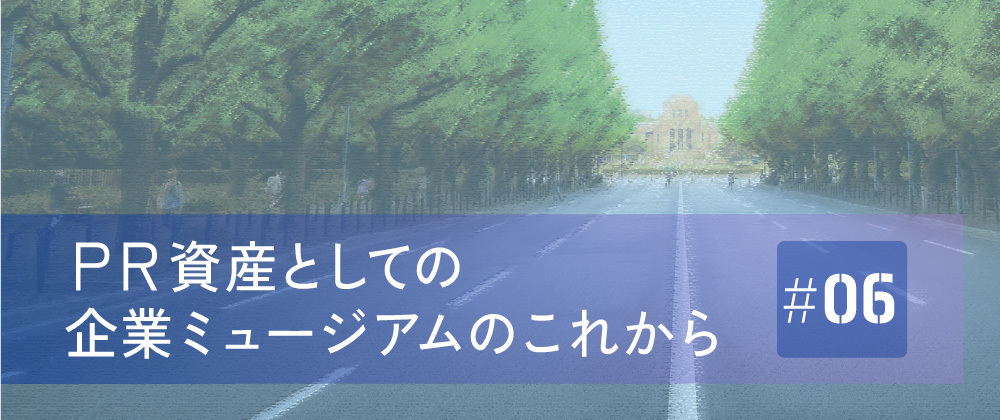
Corporate museums occupy a buffer zone spanning both the academic realm of "museums" and the business realm of "corporations." They are organizations that collaborate extensively with various corporate departments such as public relations, branding, marketing, and human resources. In this series, PR professionals will introduce diverse corporate museums, exploring their roles, functions, and potential.
At the Panasonic Museum in Kadoma City, Osaka Prefecture, visitors can experience the life of Konosuke Matsushita, known as the "God of Management." The spirit of Matsushita, who viewed management as a voyage and steered its course, lives on in this museum. This article examines how Matsushita's corporate management philosophy and life philosophy are communicated through the Panasonic Museum.
Reporting and Text: Hiroki Aibara (PR Consulting Dentsu Inc.)
A Widely Open Place for Learning
From Yodoyabashi Station in central Osaka, take the Keihan Railway for just under 20 minutes and get off at Nishisanso Station. The Panasonic Museum is a short walk from there. The Panasonic Museum reopened on March 7, 2018, to commemorate the 100th anniversary of Panasonic (formerly Matsushita Electric Industrial). It is a new version of the Matsushita Electric Historical Museum, which opened in 1968 (Showa 43) for the company's 50th anniversary. Established as a widely accessible, rich learning space, it aims to pass on the passionate spirit and the "heart" of Panasonic to future generations through the words of founder Konosuke Matsushita and the products of successive generations. Admission is free for everyone. The facility comprises the "Konosuke Matsushita History Museum," where visitors can encounter his management philosophy and outlook on life; the "Monozukuri Ism Museum," conveying the DNA of manufacturing; and "Sakura Plaza," a park facility offering relaxation to citizens.

The Konosuke Matsushita History Museum, closest to the station, stands precisely where Matsushita Electric's third headquarters building was completed in 1933 (Showa 8). This museum building, faithfully recreating the atmosphere of the original third headquarters, serves as the museum's symbol. Upon entering, visitors first encounter a panel bearing the character "道" (The Way) written in Konosuke's own hand. His words warmly welcome guests.
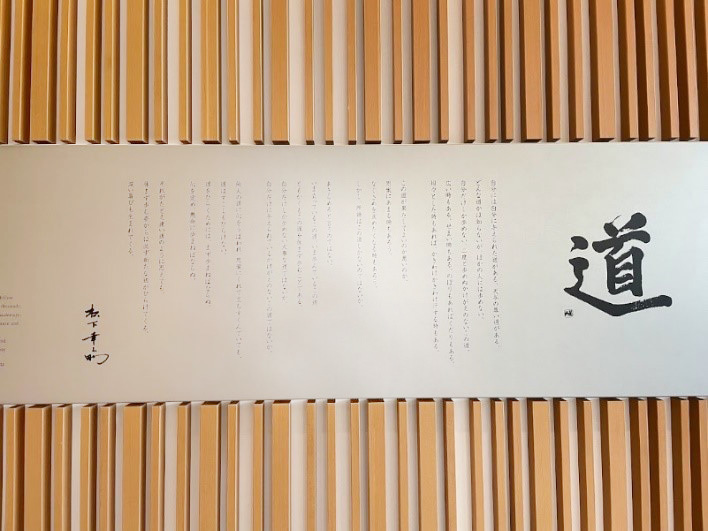
Within the exhibition halls, Konosuke's words are preserved at key points throughout the space, in addition to this "The Way" panel. Cards bearing phrases like "Build people before building things" and "Keep going until you succeed" can be freely taken home. Collecting them all forms a collection of 30 famous quotes.
The museum is structured into seven chapters: "Chapter 1: Foundation / Chapter 2: Founding / Chapter 3: Understanding Life / Chapter 4: Adversity / Chapter 5: Leap Forward / Chapter 6: Breakthrough / Chapter 7: Governance." Following Konosuke's 94-year life as a "path," the museum displays panels, video materials, and actual products from the era. It is a facility where visitors can deeply learn about the "way of life" and "philosophy" Konosuke discovered while overcoming numerous hardships, following a chronological journey.
Furthermore, in the "House of Founding," which recreates the workshop from the founding era, visitors can see items used at the time, such as cauldrons, treadle machines, and embossing presses. This is the workplace from 100 years ago, the very origin of manufacturing. In today's world where automation is causing people to disappear from factories, it is fascinating to imagine the daily conversations, the movements of hands and feet, the learning from failures and continuous improvements, and the discovery of craftsmanship's dedication that the people working there experienced.

Exhibiting home appliances that have continuously created living culture
The adjacent "Monozukuri Ism Museum" displays approximately 550 home appliances that have continuously created new lifestyles since the company's founding. As someone who lived through that era, I find the epoch-making appliances—including the "three sacred treasures" of black-and-white TVs, washing machines, and refrigerators, as well as the Technics brand audio equipment that swept the nation—deeply nostalgic.
A section gathering advertisements from the founding period through the 1980s also seems to be popular with visitors. Furthermore, it serves as a place of learning, with industrial design students enthusiastically touring the exhibits. It truly functions as a facility where one can feel the passionate spirit of the many predecessors who poured their hearts into manufacturing, connecting that legacy to the next 100 years. Brochures are available in Japanese, English, and Chinese. The video materials displayed within the museum are also available in Japanese and English, with some also in Chinese.
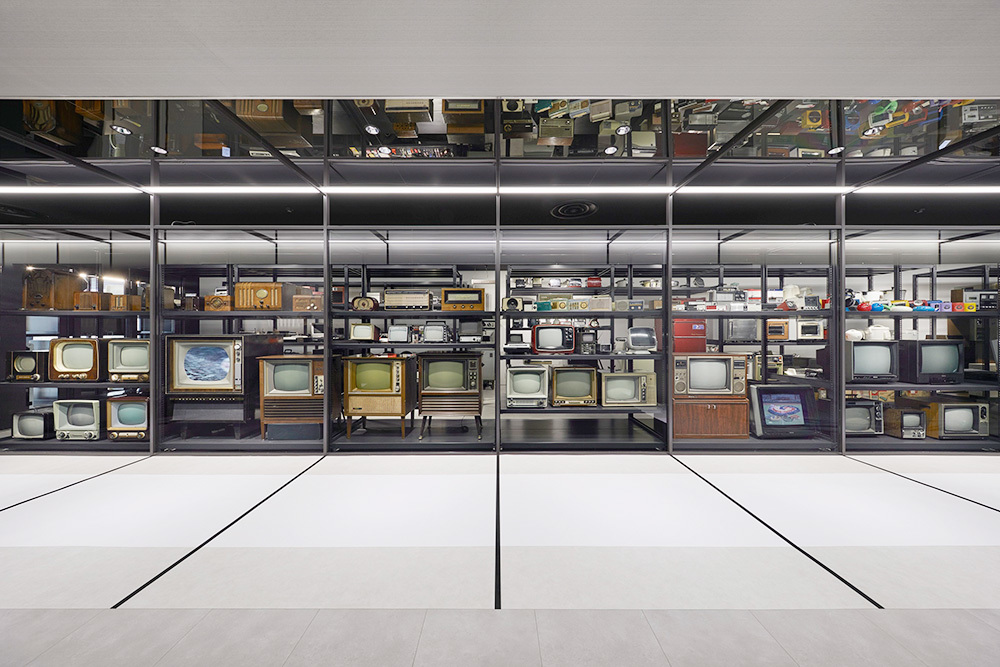
Established as a "Staff Enlightenment" Venue
Mr. Hisaya Takahama, Director of the History and Culture Communication Office at the Panasonic Museum, provided a detailed explanation of the museum's activities. Since its founding in 1918 (Taisho 7), Konosuke Matsushita placed particular emphasis on human resource development, establishing the Sales Staff Training Institute (1934) and the Matsushita Electric Training Institute (1964). Then, in 1968 (Showa 43), as part of its 50th anniversary initiatives, the company opened the "Matsushita Electric Historical Museum," the predecessor to the current Panasonic Museum. Its concept was to serve as a "spiritual home" and a "place for self-improvement and self-discovery" for all employees, enabling them to understand the company's history, feel pride in it, and reflect on the great achievements of their predecessors, thereby contributing to the company's development.
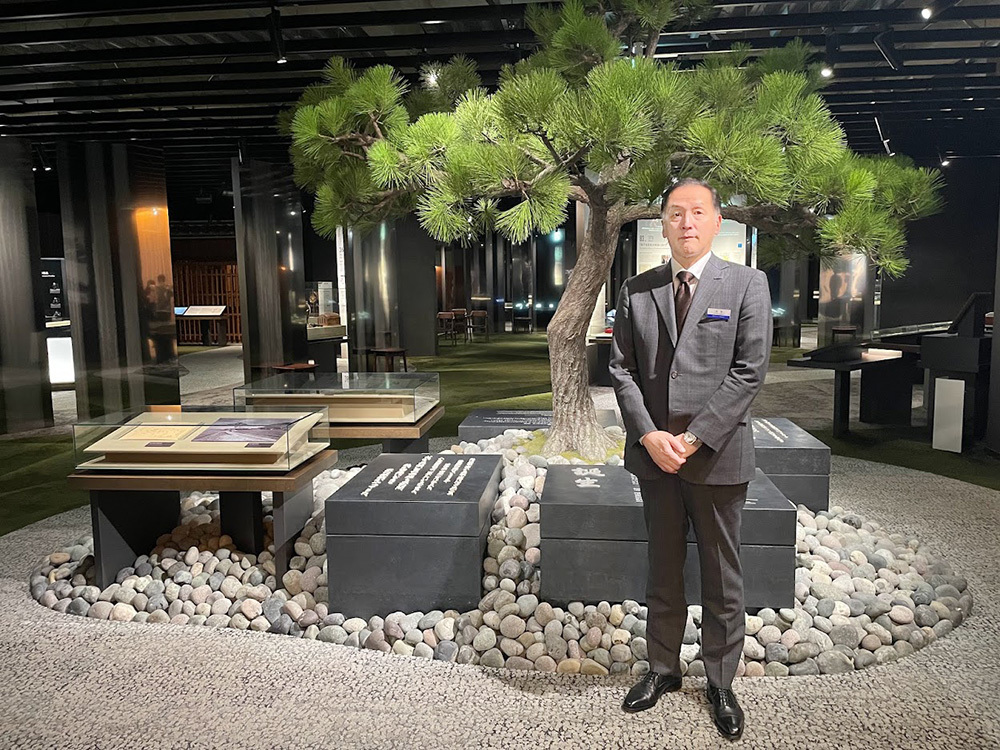
Furthermore, in 1976 (Showa 51), the company established a Corporate History Office, which incorporated the Historical Museum. This laid the foundation for the Historical and Cultural Communication Office, to which Director Takahama belongs. The role of the History and Culture Communication Office is threefold: preserving and managing materials related to company history, compiling the company history, and researching the founder's business philosophy while disseminating the founder's spirit both internally and externally. Building on this, the museum's purpose includes "employee enlightenment," inherited from the "Matsushita Electric Historical Museum."
Contributing to the Community and Society
Beyond "employee enlightenment," the museum also undertakes "contributions to the local community and society" and "business contributions." As a corporate citizen, it has fostered Panasonic fans through distinctive special exhibitions, workshops, and events designed to create a lively atmosphere, serving as an open space for the local community and society. It is frequently used for school field trips and extracurricular learning activities. Regarding "business contributions," it fosters trust by welcoming domestic and international business partners. Prior to the COVID-19 pandemic, approximately one-quarter of visitors came from overseas.
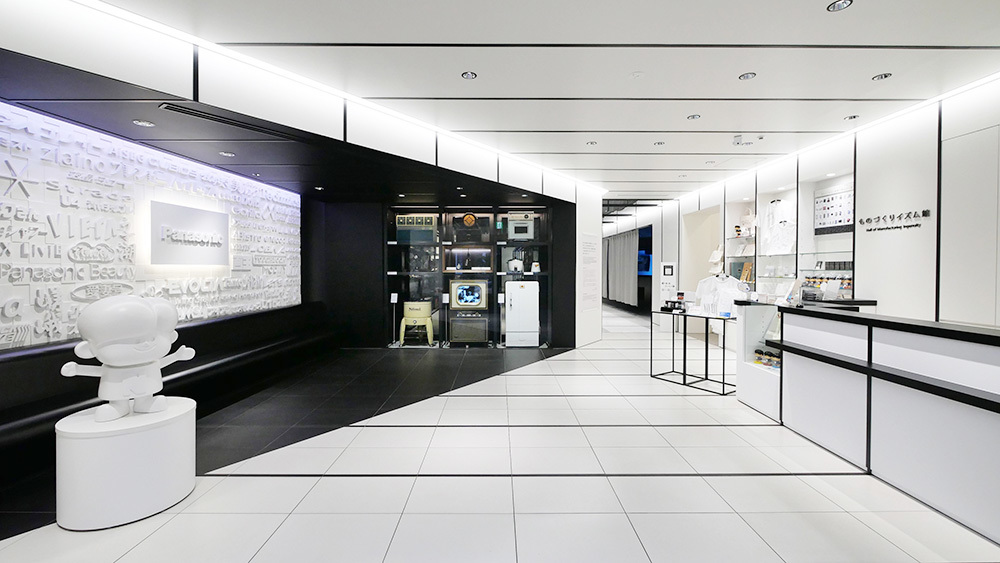
Shift to Online Information Sharing During the Pandemic
Initially, the museum actively pursued PR activities for both internal and external audiences, as well as events linked with the local community. However, the spread of COVID-19 starting in spring 2020 drastically changed the environment, reducing annual visitors from 270,000 to 50,000. As a countermeasure, the museum first strengthened its online presence. Targeting the next generation, the museum now streams programs featuring external celebrities four times a year and delivers self-improvement content based on books published by PHP Institute six times a year. Additionally, employees themselves livestream special exhibitions. In fiscal year 2021, total internet page views reached approximately 1.6 million, with video views hitting 930,000. The museum actively utilizes social media platforms like Facebook and Instagram, continuously disseminating information to expand its follower base.
Strengthening Internal Communications
Furthermore, starting in fiscal year 2021, the Panasonic Museum decided to focus on "employee enlightenment," or internal communications, with employees as key stakeholders. This decision stemmed from the major group restructuring in April 2022, when Panasonic transitioned to a holding company structure. It was deemed crucial to return to the founder's philosophy and foster a strong sense of "Panasonic-ness" to accelerate the "specialization and refinement" of each operating company.
The current Management Principles have been translated into multiple languages and distributed to employees worldwide. Since facilities like the Panasonic Museum, where employees can learn about the company's history, exist only in Japan and China, the museum provides digital content online as a substitute. Employees cannot effectively communicate their activities and contributions to society if they do not understand their company's principles. It is truly commendable that Panasonic, with its long history of investing in human resources development, continues to uphold this tradition.
About Konosuke Matsushita, the "God of Management"
A note on Konosuke Matsushita. The city of Kadoma, Osaka, and its surrounding areas are home to a high concentration of manufacturing companies. From the late Meiji period to the early Showa era, transportation routes were developed in this region, driving industrialization. Particularly after Konosuke Matsushita's "Matsushita Electric" relocated its headquarters and factory to this area in 1933, related factories proliferated, transforming it significantly into a "manufacturing town."
Konosuke's life—dedicated to the world of electricity even when electric lights were scarcely widespread at the end of the Meiji era, and ending at the close of the Showa era (Heisei Year 1) as the current IoT age dawned—can be seen as a quintessential success story symbolizing Japan's high economic growth period, the Showa era. Starting as a young apprentice at a brazier shop in Osaka at age nine, he overcame countless hardships and steadfastly pursued his own path. His powerful drive to pursue societal prosperity, combined with his down-to-earth nature, created a deeply human appeal. As a successful businessman, Konosuke came to be known as the "God of Management." His life story continues to inspire people both in Japan and abroad.
Alongside his business activities, Konosuke also confronted the fundamental question of "What is a human being?" through ethical education and publishing activities via the PHP Institute, which he founded in 1946 (Showa 21), immediately after the war. Since its publication in 1968 (Showa 43), the astonishing long-seller "Opening the Way" has surpassed 5.5 million copies in cumulative sales and continues to be read today. It is a collection of short essays written by Konosuke Matsushita based on his own experiences and deep insights into life. It is sold in the museum shop, along with many other PHP books, featuring a limited-edition original cover (¥870 excluding tax).
The museum shops in both locations offer unique items, including nostalgic "National Boy" character goods available only here, original merchandise, and PHP books.
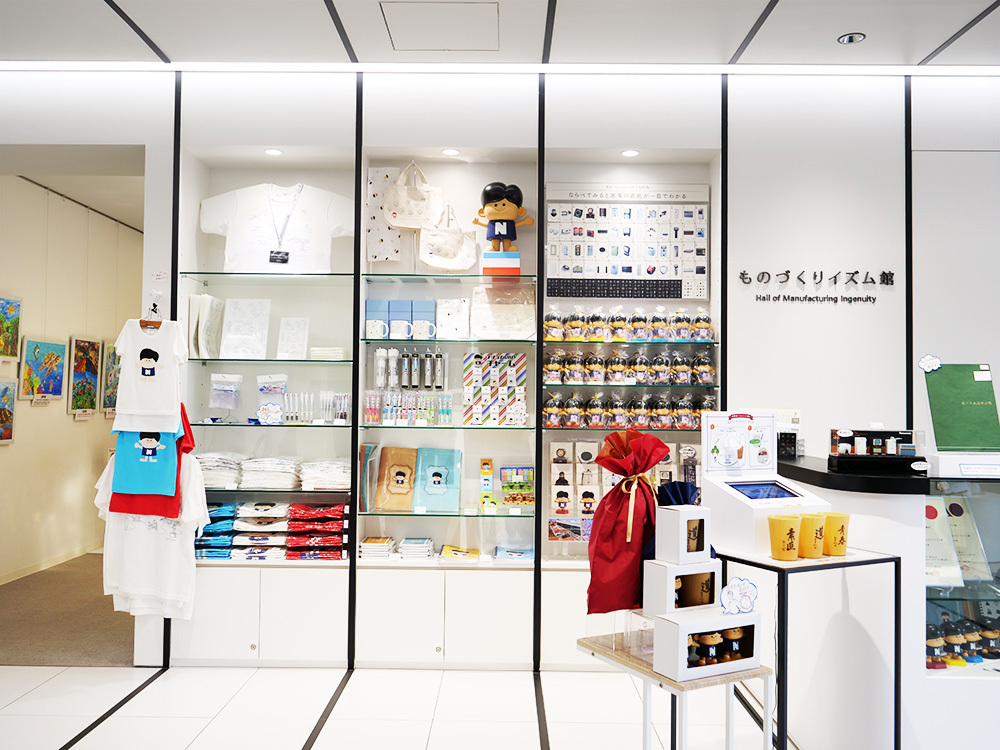
The "Sakura Plaza," open as a place of relaxation for citizens, is also deeply moving. Its 16,200-square-meter grounds are filled with 190 Somei-Yoshino cherry trees that bloom in full splendor come spring.
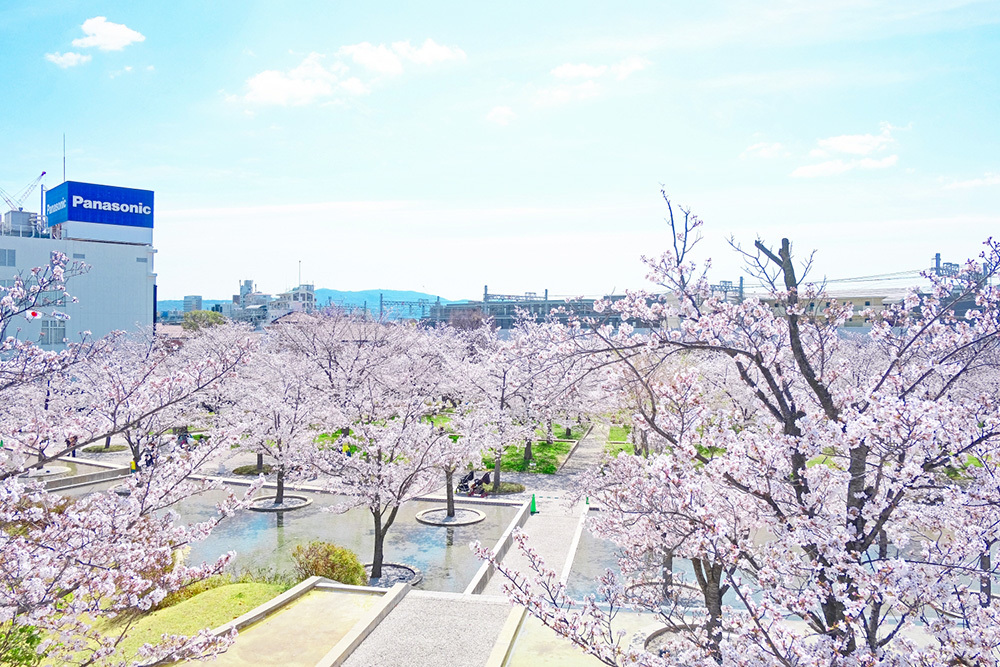
Finally...
It had actually been about 35 years since I last stepped off at Nishisanso Station. Back then, I was meeting a friend who worked at Matsushita Electric, and the station area was bustling with factory workers. While it depends on the time of day, compared to that era, the town's appearance has changed significantly—it now feels much more organized and quiet. A ship's steering wheel is placed on the museum's roof as a monument. It seems Konosuke Matsushita specifically purchased it in Kobe at the time and had it installed, symbolizing his role as the "steersman" guiding the company's headquarters functions.
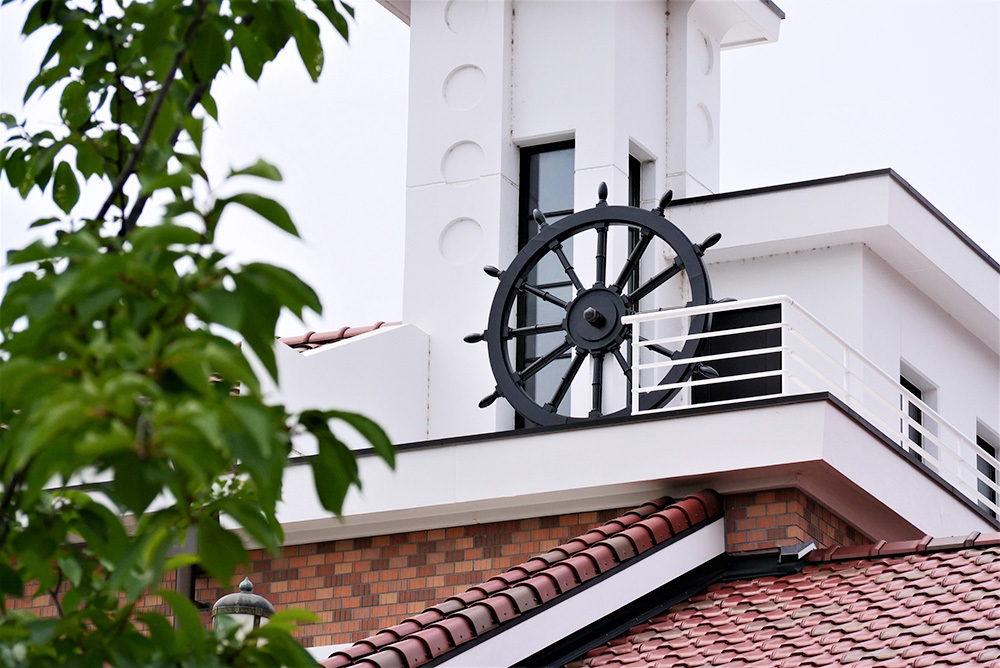
Panasonic's website states: "Today, as we face a major turning point in society, the economy, industry... in every aspect, the Panasonic Group will continue to forge a new future based on our management philosophy, striving to remain a company that 'contributes to the development of society'." Like a ship navigating uncharted waters, the museum embodies the enduring spirit of Konosuke Matsushita, guiding the way to steer toward a new future.
The official Panasonic Museum website is here.
[Editor's Note] (From the Web Dentsu Inc. Editorial Department)
The theme of the Panasonic Museum is, quite simply, "The Way."
When people hear "the Way," many likely think of Tokugawa Ieyasu's last words or a passage by Kōtarō Takamura. Or perhaps Kitahara Hakushū's nursery rhyme. For driving enthusiasts, the term "roadside station" (michi-no-eki) might be familiar. The fact that "road" (michi) is read as "the Way" (dō) offers a glimpse into the unique Japanese perspective on life and values. What do you think? It's the "do" in judo, kendo, bushido, kadō, and chadō.
"Do" (道) doesn't refer to a "path" or "route" in the sense of a process. If you're going somewhere, choosing this "route" is the smart move. It saves time and is cost-effective. Being constantly exposed to such information makes me feel like my heart is growing poorer.
I believe the "do" presented by the Panasonic Museum refers to "the Way" (道), not just "path" (道). What it wants to convey isn't that Konosuke Matsushita walked this path, showed Japan the way forward, and successfully paved his own road to success. What path lies within your heart? That path doesn't betray your true feelings, does it? I felt as if Japan's world-renowned "God of Management" was sending me this very message.
Was this article helpful?
Newsletter registration is here
We select and publish important news every day
For inquiries about this article
Back Numbers
Author

Hiroki Awaihara
PR Consulting Dentsu Inc.
Kansai Branch Office, Communication Development Department
Kansai Branch Office, Communication Development Department For 38 years, we have been engaged in large-scale projects such as expositions, commercial facilities, and theme parks in the Western Japan region centered on Kansai, as well as regional revitalization. We have provided PR consulting and solutions to over 3,000 B2C, B2B, and foreign-affiliated companies, government agencies, and organizations across sectors including tourism, pharmaceuticals, food and beverages, consumer goods, hotels, machinery, universities, trading companies, sporting goods, and new energy. Additionally, we serve as lecturers for public relations seminars for corporations and local governments.




